Although we have been busy bees since our arrival in the picturesque Kananaskis Country, forest fires from nearly all directions (BC to the West, Grand Cache and the NWT to the North and Oregon and Montana to the South) produced a thick haze in the air, temporarily slowing our photography endeavors for the past few days. It has made space for us to catch up on behind the scenes work- processes we thought would be fun to share on our blog.
The Mountain Legacy Project tracks long-term landscape change through a scientific and inherently interdisciplinary technique called repeat photography. Changes in vegetation growth, glacier retraction or watershed formations (like the case of Tanya’s research) in response to human induced and unprecedented climate change are a few examples of processes captured by repeat photography. So here’s a little snapshot of how we go about repeat photography in our everyday work:

Vladka Lackova-Gat and Nicole Goodman (on the camera). Cairns, a pile of rocks to mark a route, were often used in survey methodology to mark a specific survey location
Working from historic Library and Archives Canada images of systematic photos taken by Surveyors in the late 1800s to early 1900s in order to map the Canadian Rocky Mountains, we set out, either on foot or in the helicopter, to a survey station (normally found at the mountain top). To locate the survey station, we use a Garmin GPS, affectionately known to the 2014 crew as “le gamin”. Helicopter landings on high mountain peaks often require what’s called a “hover exit” (the helicopter has to maintain full power and usually cannot place both skids fully on the ground), a training that we received this past week. We also got our radio operators certification, allowing us to stay safe and connected throughout our days in the mountains.
Once we’ve summited or located our survey location, we use a printed copy of a historic image to locate the exact location, height and angle to set up our tripod. Although this process may seem relatively straightforward, centimeters count and a significant amount of time can be spent trying to line up a historic image in a landscape that has experienced a hundred years of change! Alas a good chunk of our time is spent in the mountain peaks. Cold weather or an incoming storm can occasionally speed this process up a little…
![[Left to right] Kristen Walsh, Mandy Arnaud and Nicole Goodman lining up historic photos and preparing field notes](https://mountainlegacy.files.wordpress.com/2014/07/dscf0659.jpg?w=300&h=225)
[Left to right] Kristen Walsh, Mandy Arnaud and Nicole Goodman lining up historic photos and preparing field notes
We also measure the weather (temperature, wind, relative humidity, altitude, etc) to include in our field notes. These field notes are pivotal to understanding the context the photo was taken and also leave a trail of information for future generations who may want to go back and revisit these spots embedded with legacy.
At the end of a day in the field, data entry begins and the preparation of our next days images, route finding, checking weather forecasts, etc. Technical skills aside, yoga has also made its way into our routine, providing ease in those difficult to maneuver tripod shooting positions. Thai massage is in the near forecast too!
This project is exposing us to some challenging mountaineering situations and solid skills training. Yesterday we joined Brent Davis, an experienced alpinist and ESRD employee, for some short rope training and mountaineering basics (like tying good knots!)
![[Left to right] Rick Arthur, Brent Davis (alpine instructor), Nicole Goodman, Tanya Taggart-Hodge and Vladka Lackova-Gat](https://mountainlegacy.files.wordpress.com/2014/07/dscf0746.jpg?w=300&h=225)
[Left to right] Rick Arthur, Brent Davis (alpine instructor), Nicole Goodman, Tanya Taggart-Hodge and Vladka Lackova-Gat at the Wasootch Slabs
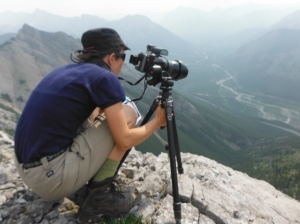
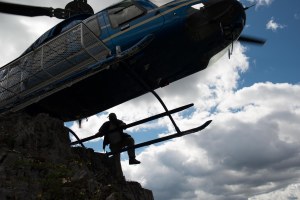
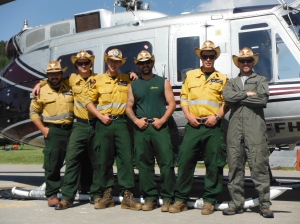
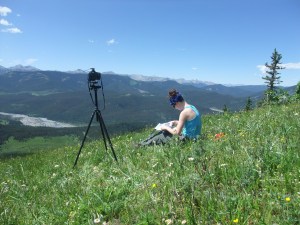
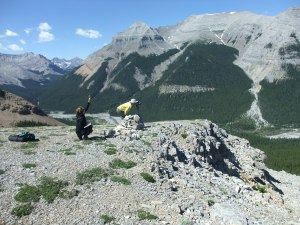

![[Rick Arthur, Vladka Lackova-Gat] The Rocky Mountains are notoriously “easy crumbling”. We will likely be yelling “rock” lot this summer, when throwing loose pieces over the ridge.](https://mountainlegacy.files.wordpress.com/2014/07/img_2463.jpg?w=300&h=225)
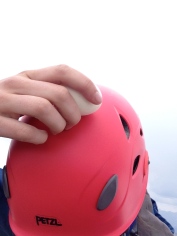







I had a great day with my favourite type of people (Smart!) in going over some steep terrain navigation and techniques! Simple knots and limited equipment can still get folks through some “challenging” terrain safely! I love it when people ask me “why” and “how” and then use the new knowledge! I was also very honoured when Vladka told me that her Dad is a “climbing instructor” (I believe actually a Mountain Guide) and I reminder her of him! I am sure I am not in his league, but very happy for the comparison! We did 5.4 (YDS) rated stuff in hiking boots and everyone was sure footed and learned the knots and anchoring techniques very well! Looking forward to 2 “interesting ridges” in Mid August! Enjoy Wilmore!
By: Brent Davis on July 23, 2014
at 16:21
I like your refined egg cracking technique. Very elegant.
By: Emily G on July 25, 2014
at 07:34
Great photos, love the stories.
By: Leanne Olson on July 27, 2014
at 09:24